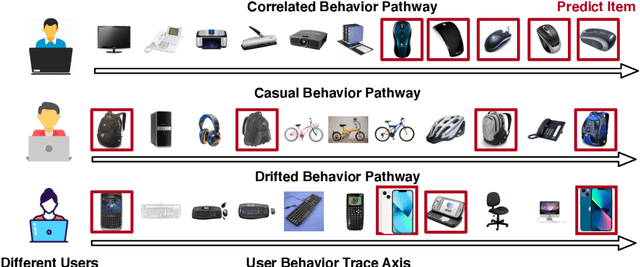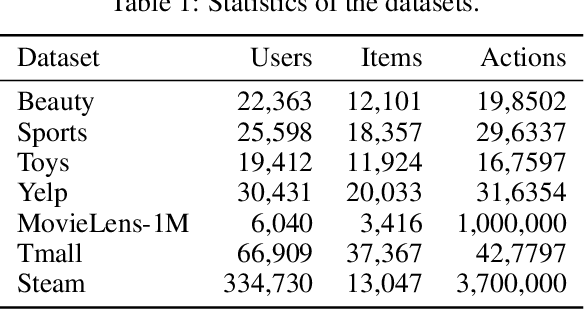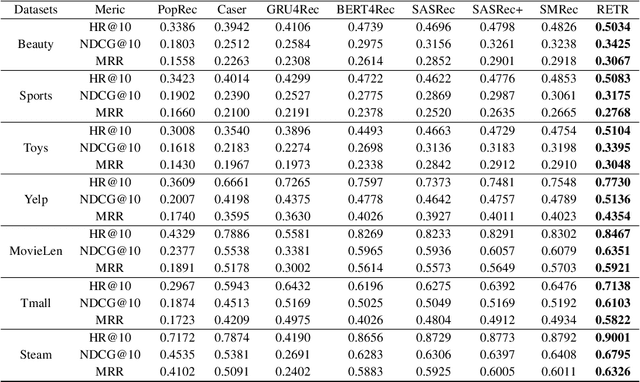Qinyan Dai
BECAME: BayEsian Continual Learning with Adaptive Model MErging
Apr 03, 2025Abstract:Continual Learning (CL) strives to learn incrementally across tasks while mitigating catastrophic forgetting. A key challenge in CL is balancing stability (retaining prior knowledge) and plasticity (learning new tasks). While representative gradient projection methods ensure stability, they often limit plasticity. Model merging techniques offer promising solutions, but prior methods typically rely on empirical assumptions and carefully selected hyperparameters. In this paper, we explore the potential of model merging to enhance the stability-plasticity trade-off, providing theoretical insights that underscore its benefits. Specifically, we reformulate the merging mechanism using Bayesian continual learning principles and derive a closed-form solution for the optimal merging coefficient that adapts to the diverse characteristics of tasks. To validate our approach, we introduce a two-stage framework named BECAME, which synergizes the expertise of gradient projection and adaptive merging. Extensive experiments show that our approach outperforms state-of-the-art CL methods and existing merging strategies.
Recommender Transformers with Behavior Pathways
Jun 13, 2022



Abstract:Sequential recommendation requires the recommender to capture the evolving behavior characteristics from logged user behavior data for accurate recommendations. However, user behavior sequences are viewed as a script with multiple ongoing threads intertwined. We find that only a small set of pivotal behaviors can be evolved into the user's future action. As a result, the future behavior of the user is hard to predict. We conclude this characteristic for sequential behaviors of each user as the Behavior Pathway. Different users have their unique behavior pathways. Among existing sequential models, transformers have shown great capacity in capturing global-dependent characteristics. However, these models mainly provide a dense distribution over all previous behaviors using the self-attention mechanism, making the final predictions overwhelmed by the trivial behaviors not adjusted to each user. In this paper, we build the Recommender Transformer (RETR) with a novel Pathway Attention mechanism. RETR can dynamically plan the behavior pathway specified for each user, and sparingly activate the network through this behavior pathway to effectively capture evolving patterns useful for recommendation. The key design is a learned binary route to prevent the behavior pathway from being overwhelmed by trivial behaviors. We empirically verify the effectiveness of RETR on seven real-world datasets and RETR yields state-of-the-art performance.
Structure-Preserving Deraining with Residue Channel Prior Guidance
Aug 20, 2021



Abstract:Single image deraining is important for many high-level computer vision tasks since the rain streaks can severely degrade the visibility of images, thereby affecting the recognition and analysis of the image. Recently, many CNN-based methods have been proposed for rain removal. Although these methods can remove part of the rain streaks, it is difficult for them to adapt to real-world scenarios and restore high-quality rain-free images with clear and accurate structures. To solve this problem, we propose a Structure-Preserving Deraining Network (SPDNet) with RCP guidance. SPDNet directly generates high-quality rain-free images with clear and accurate structures under the guidance of RCP but does not rely on any rain-generating assumptions. Specifically, we found that the RCP of images contains more accurate structural information than rainy images. Therefore, we introduced it to our deraining network to protect structure information of the rain-free image. Meanwhile, a Wavelet-based Multi-Level Module (WMLM) is proposed as the backbone for learning the background information of rainy images and an Interactive Fusion Module (IFM) is designed to make full use of RCP information. In addition, an iterative guidance strategy is proposed to gradually improve the accuracy of RCP, refining the result in a progressive path. Extensive experimental results on both synthetic and real-world datasets demonstrate that the proposed model achieves new state-of-the-art results. Code: https://github.com/Joyies/SPDNet
Feedback Network for Mutually Boosted Stereo Image Super-Resolution and Disparity Estimation
Jun 02, 2021



Abstract:Under stereo settings, the problem of image super-resolution (SR) and disparity estimation are interrelated that the result of each problem could help to solve the other. The effective exploitation of correspondence between different views facilitates the SR performance, while the high-resolution (HR) features with richer details benefit the correspondence estimation. According to this motivation, we propose a Stereo Super-Resolution and Disparity Estimation Feedback Network (SSRDE-FNet), which simultaneously handles the stereo image super-resolution and disparity estimation in a unified framework and interact them with each other to further improve their performance. Specifically, the SSRDE-FNet is composed of two dual recursive sub-networks for left and right views. Besides the cross-view information exploitation in the low-resolution (LR) space, HR representations produced by the SR process are utilized to perform HR disparity estimation with higher accuracy, through which the HR features can be aggregated to generate a finer SR result. Afterward, the proposed HR Disparity Information Feedback (HRDIF) mechanism delivers information carried by HR disparity back to previous layers to further refine the SR image reconstruction. Extensive experiments demonstrate the effectiveness and advancement of SSRDE-FNet.
 Add to Chrome
Add to Chrome Add to Firefox
Add to Firefox Add to Edge
Add to Edge